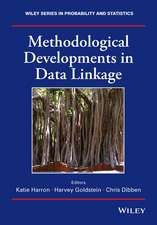Actin-based Motility: Cellular, Molecular and Physical Aspects
Editat de Marie-France Carlieren Limba Engleză Paperback – 18 oct 2014
| Toate formatele și edițiile | Preț | Express |
|---|---|---|
| Paperback (1) | 1417.91 lei 6-8 săpt. | |
| SPRINGER NETHERLANDS – 18 oct 2014 | 1417.91 lei 6-8 săpt. | |
| Hardback (1) | 1423.95 lei 6-8 săpt. | |
| SPRINGER NETHERLANDS – 24 sep 2010 | 1423.95 lei 6-8 săpt. |
Preț: 1417.91 lei
Preț vechi: 1492.53 lei
-5% Nou
Puncte Express: 2127
Preț estimativ în valută:
271.30€ • 283.30$ • 224.04£
271.30€ • 283.30$ • 224.04£
Carte tipărită la comandă
Livrare economică 15-29 aprilie
Preluare comenzi: 021 569.72.76
Specificații
ISBN-13: 9789400796409
ISBN-10: 9400796404
Pagini: 448
Ilustrații: XII, 435 p.
Dimensiuni: 155 x 235 x 24 mm
Greutate: 0.62 kg
Ediția:2010
Editura: SPRINGER NETHERLANDS
Colecția Springer
Locul publicării:Dordrecht, Netherlands
ISBN-10: 9400796404
Pagini: 448
Ilustrații: XII, 435 p.
Dimensiuni: 155 x 235 x 24 mm
Greutate: 0.62 kg
Ediția:2010
Editura: SPRINGER NETHERLANDS
Colecția Springer
Locul publicării:Dordrecht, Netherlands
Public țintă
ResearchCuprins
Cellular Aspects.- Elementary Cellular Processes Driven by Actin Assembly: Lamellipodia and Filopodia.- Coupling Membrane Dynamics to Actin Polymerization.- Endocytic Control of Actin-based Motility.- Actin in Clathrin-Mediated Endocytosis.- Actin Cytoskeleton and the Dynamics of Immunological Synapse.- Actin-based Motile Processes in Tumor Cell Invasion.- Actin-based Chromosome Movements in Cell Division.- Roles for Actin Dynamics in Cell Movements During Development.- Molecular Aspects.- Regulation of the Cytoplasmic Actin Monomer Pool in Actin-based Motility.- From Molecules to Movement: In Vitro Reconstitution of Self-Organized Actin-based Motile Processes.- The WASP-Homology 2 Domain and Cytoskeleton Assembly.- Formin-Mediated Actin Assembly.- Visualization of Individual Actin Filament Assembly.- Movement of Cargo in Bacterial Cytoplasm: Bacterial Actin Dynamics Drives Plasmid Segregation.- Physical Aspects.- Protrusive Forces Generated by Dendritic Actin Networks During Cell Crawling.- Mathematical and Physical Modeling of Actin Dynamics in Motile Cells.- Force Production by Actin Assembly: Simplified Experimental Systems for a Thorough Modeling.
Textul de pe ultima copertă
This book presents the cellular, molecular and physical aspects of force and movement by the self-assembly of actin, one of the most abundant proteins found in cells, into cytoskeletal filaments. « Actin-based motile processes » are responsible for a large variety of motile activities such as chemotactic locomotion, embryonic and metastatic cell migration, wound healing, eukaryotic cytokinesis and bacterial plasmid segregation, endocytic and phagocytic activities, as well as morphogenetic processes including, axis patterning in early embryos, axonal growth in brain development, and the immune response and synaptic plasticity processes at the origin of learning and memory. The book describes how the recently undertaken multidisciplinary and multiscale approaches have explored the molecular and physical mechanisms at the origin of force and movement produced by actin self-assembly. The chosen topics show how advances have been made in the field of cell motility due to the progress in live cell imaging, light microscopy, improved resolution in the structure of large protein assemblies, the biochemical analysis and mathematical modeling of actin assembly dynamics and the development of nanotechnologies enabling us to measure forces in the range of pico- to nano-newtons produced by actin assemblies.
Caracteristici
Covers insights coming from the various disciplines (cell biology, biochemistry, biophysics and theoretical modelling) that have contributed, in the past ten years, in understanding actin-based motility The application of the latest scientific techniques in the unraveling of cell motility A comprehensive understanding of actin-based cell motility













